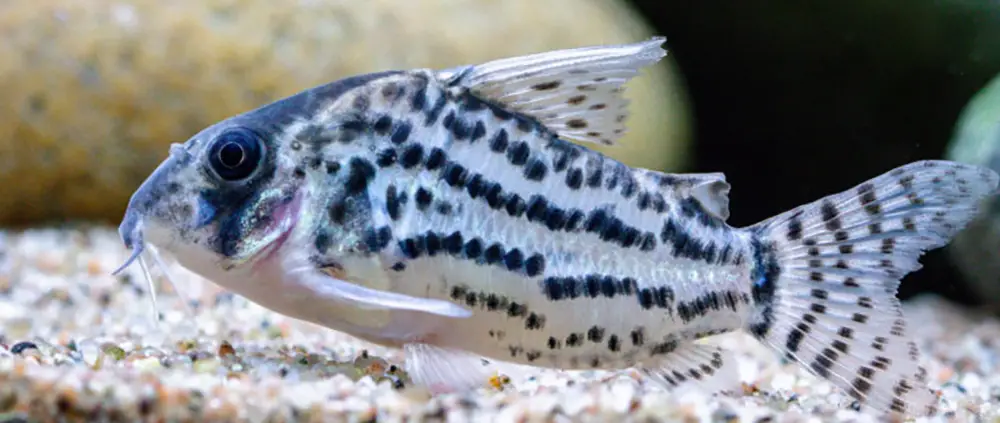Can Corydoras live without sand?
If you have an empty tank or aquarium which is just crying out for a handful of corydoras (also known as cory catfish), then you’ll almost certainly have a bunch of questions about their care, lifespan, habitat and diet. One question that we’re frequently asked is ‘can corydoras live without sand’ and, the resounding answer to that is no.
Life’s a beach for the corydora
When keeping tropical fish, it’s important to create an environment which is as close to their natural habitat as possible. With the corydora, this means lining your tank with sand in order to recreate the sandy riverbeds that they’re used to. Cory catfish feed by sifting sand through their gills and, so, without sand in the tank, their natural feeding process will be disrupted.
What kind of sand should I use?
Where possible, soft natural sand works best for corydoras and, river sand, natural black sand and silica sand are ideal. At a pinch, you can use play sand but you should never substitute sand for gravel as this can cause damage to the fish’s fins and the ultra sensitive barbels in their mouths. When choosing your sand, make sure that it is beige or neutral toned and always avoid black or coloured versions, however pretty they may look inside the tank.
Additional care
As well as making sure that your tank is lined with soft sand, you may want to add some pieces of driftwood to allow these nocturnal fish to hide during daylight hours. You’ll also want to make sure that you’ve got a good, sturdy cover for your aquarium or tank to prevent the fish escaping when leaping to the surface for food or air.
If you’re just starting out on your fish-owning journey, cory catfish are a really good choice as they’re pretty easy to look after. As these are sociable chaps, cory catfish thrive when in groups of six or more – which means that you’ll need to make sure that you have a large enough tank. As a rule of thumb, a minimum of 10 gallons is required to keep your coras happy and healthy. You can feed your corydoras a variety of foods including shrimp pellets, dead shrimp, bloodworms, sinking wafers and catfish pellets.
Conclusion
While cory catfish are a fairly easy species to look after, you will need to follow the few rules mentioned in this article to make sure that your fish stay healthy. One of the most important of these rules – and the subject of this article – is that you must always ensure that your tank is lined with soft natural sand to help the fish to feed properly and stay healthy.

